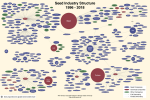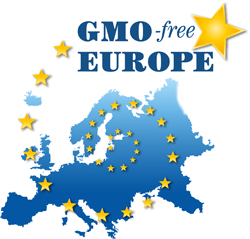GMO news related to the United States
19.02.2019 | permalink
GMO Feature: Canola | Living Non-GMO
Our readers write to us almost every day to ask why they saw canola in a Non-GMO Project Verified product. There’s a fairly pervasive misconception that all canola is genetically modified, but this is not true! Non-GMO canola does exist; when you see canola in a product bearing the Butterfly, you can rest assured that it’s non-GMO canola because we test (major) high-risk crops that go into your food.
13.02.2019 | permalink
UW study: Exposure to chemical in Roundup increases risk for cancer
Source Newsroom: University of Washington
Newswise — Exposure to glyphosate—the world’s most widely used, broad-spectrum herbicide and the primary ingredient in the weedkiller Roundup—increases the risk of some cancers by more than 40 percent, according to new research from the University of Washington.
Various reviews and international assessments have come to different conclusions about whether glyphosate leads to cancer in humans.
The research team conducted an updated meta-analysis—a comprehensive review of existing literature—and focused on the most highly exposed groups in each study. They found that the link between glyphosate and Non-Hodgkin Lymphoma is stronger than previously reported.
Their findings were published this month in the online journal Mutation Research/Reviews in Mutation Research.
“Our analysis focused on providing the best possible answer to the question of whether or not glyphosate is carcinogenic,” said senior author Lianne Sheppard, a professor in the UW departments of Environmental & Occupational Health Sciences and Biostatistics. “As a result of this research, I am even more convinced that it is.”
10.02.2019 | permalink
Exposure to Glyphosate-Based Herbicides and Risk for Non-Hodgkin Lymphoma: A Meta-Analysis and Supporting Evidence
Abstract
Glyphosate is the most widely used broad-spectrum systemic herbicide in the world. Recent evaluations of the carcinogenic potential of glyphosate-based herbicides (GBHs) by various regional, national, and international agencies have engendered controversy. We investigated whether there was an association between high cumulative exposures to GBHs and increased risk of non-Hodgkin lymphoma (NHL) in humans. We conducted a new meta-analysis that included the most recent update of the Agricultural Health Study (AHS) cohort published in 2018 along with five case-control studies. Using the highest exposure groups when available in each study, we report the overall meta-relative risk (meta-RR) of NHL in GBH-exposed individuals was increased by 41% (meta-RR = 1.41, 95% CI, confidence interval: 1.13–1.75). For comparison, we also performed a secondary meta-analysis using high-exposure groups with the earlier AHS (2005), and we determined a meta-RR for NHL of 1.45 (95% CI: 1.11–1.91), which was higher than the meta-RRs reported previously. Multiple sensitivity tests conducted to assess the validity of our findings did not reveal meaningful differences from our primary estimated meta-RR. To contextualize our findings of an increased NHL risk in individuals with high GBH exposure, we reviewed available animal and mechanistic studies, which provided supporting evidence for the carcinogenic potential of GBH. We documented further support from studies of malignant lymphoma incidence in mice treated with pure glyphosate, as well as potential links between GBH exposure and immunosuppression, endocrine disruption, and genetic alterations that are commonly associated with NHL. Overall, in accordance with evidence from experimental animal and mechanistic studies, our current meta-analysis of human epidemiological studies suggests a compelling link between exposures to GBHs and increased risk for NHL.
08.02.2019 | permalink
GMO Bt Crops May Not Be as Safe as Advertised
Cornucopia’s Take: Cry toxins are highly active protein toxins originally isolated from the bacterium Bacillus thuringiensis (Bt). They are genetically engineered into some GMO crops to perforate the gut membrane of insects that eat them. Poisoned pests stop eating and eventually die. Unfortunately, non-target animals, including monarch butterflies, swallowtail butterflies, lacewings, caddisflies, bees, water fleas, and mammals, are also susceptible to Cry toxins. Several influential studies used by the industry to show the safety of Cry toxins for non-target organisms are now in question. It appears the researched insects’ feed contained an inexplicably large dose of antibiotics, and antibiotics are known to inhibit the deadly action of Cry toxins.
04.02.2019 | permalink
US poultry producer turns to non-GMO feed
To launch a GMO-free product line with US-grown grain, Springer Mountain Farms first had to work with feed crop producers to establish a feed ingredient supply chain.
04.02.2019 | permalink
GMO: USDA Imposes the Worst Regulation Ever
In 2018, the overall cost for Americans to comply with regulations issued by U.S. government agencies decreased for the first time since that burden began to be measured in 2005. But that achievement wasn’t an across-the-board success story, because one federal government department bucked the trend by greatly increasing the regulatory burden on American food producers, where the cost of complying with new regulations issued by the U.S. Department of Agriculture (USDA) will ultimately be paid by all Americans whenever and wherever they might shop for food.
(.....)
The USDA’s regulators really believe its new bioengineered (BE) food labeling requirements will provide no measurable value to improving anybody’s health, or their pocketbook, or to the environment, where the only benefit they identify to justify the massive new regulatory burden lies in “eliminating costly inefficiencies of a state-level approach in BE disclosure”, where they single out the state of Vermont’s bioengineered food labeling regulations as even more costly.
29.01.2019 | permalink
Rigging the Science of GMO Ecotoxicity: Evidence of GMO Bt Crop Safety Manipulation
Researchers who work on GMO crops are developing special “artificial diet systems”. The stated purpose of these new diets is to standardise the testing of the Cry toxins, often used in GMO crops, for their effects on non-target species. But a paper published last month in the journal Toxins implies a very different interpretation of their purpose. The new diets contain hidden ingredients that can mask Cry toxicity and allow them to pass undetected through toxicity tests on beneficial species like lacewings (Hilbeck et al., 2018). Thus the new diets will benefit GMO crop developers by letting new ones come to market quicker and more reliably. Tests conducted with the new diets are even being used to cast doubt on previous findings of ecotoxicological harm.
GMO Cry toxins
Cry toxins are a family of highly active protein toxins originally isolated from the gut pathogenic bacterium Bacillus thuringiensis (Latham et al., 2017). They confer insect-resistance and up to six distinct ones are added to GMO corn, cotton, and other crops (Hilbeck and Otto, 2015).
18.01.2019 | permalink
Monsanto Roundup Trial Tracker: New Developments
You can find updates about the ongoing litigation against Monsanto Company in this blog, which we will be updating regularly with tips and tidbits of interest. Discovery documents from the litigation are posted on our Monsanto Papers page, and we provide links to recent news stories and analysis here.
January 18, 2019 – Time flies when a big case approaches. U.S. District Judge Vince Chhabria has set an evidentiary hearing for Jan 28 at 9 a.m. local time in federal court in San Francisco to be followed by a “Daubert” hearing that day at 2 p.m. The hearings are to consider evidence and experts that will be key to the first-ever federal trial taking up claims that Monsanto’s glyphosate-based herbicides can cause cancer and Monsanto has covered up the risks. Video recording of the proceedings is being allowed.
18.01.2019 | permalink
Costco to be the First Major Retailer to Dump Monsanto's Roundup and Glyphosate Herbicide from its Shelves
It’s been said that voting with your dollars is the most effective way of creating change in this consumer/capitalist culture, and after years of petitioning major retailers to stop selling products that contain Monsanto’s toxic glyphosate herbicide it appears that Costco may be the first major store to remove this product from its shelves.
The use of glyphosate, which is the active ingredient in Monsanto’s Roundup, has skyrocketed around the globe in spite of research outlining the harmful effects of this herbicide, including liver disease and cancer.
This is big news because in addition to the industrial use of glyphosate, the retail sale of glyphosate direct to consumers for use on home lawns and gardens is also a huge business.
11.01.2019 | permalink

The Sobering Details Behind the Latest Seed Monopoly Chart
When Philip Howard of Michigan State University published the first iteration of his now well-known seed industry consolidation chart in 2008, it starkly illustrated the extent of acquisitions and mergers of the previous decade: Six corporations dominated the majority of the brand-name seed market, and they were starting to enter into new alliances with competitors that threatened to further weaken competition.
Howard’s newly updated seed chart is similar but even starker. It shows how weak antitrust law enforcement and oversight by the U.S. Department of Justice (DOJ) has allowed a handful of firms to amass enormous market, economic, and political power over our global seed supply. The newest findings show that the Big 6 (Monsanto, DuPont, Syngenta, Dow, Bayer, and BASF) have consolidated into a Big 4 dominated by Bayer and Corteva (a new firm created as a result of the Dow–DuPont merger), and rounded out with ChemChina and BASF. These four firms control more than 60 percent of global proprietary seed sales.
Howard began his annual tracking of seed industry ownership changes in 1998, a year that served as a turning point for industry consolidation. Two years after genetically engineered (GE) varieties were introduced in 1996, by 1998 the large agribusiness companies had accelerated their consolidation by buying up smaller firms to accumulate more intellectual property (IP) rights. By 2008, Monsanto’s patented genetics alone were planted on 80 percent of U.S. corn acres, 86 percent of cotton acres, and 92 percent of soybean acres. Today, these percentages are even higher.
